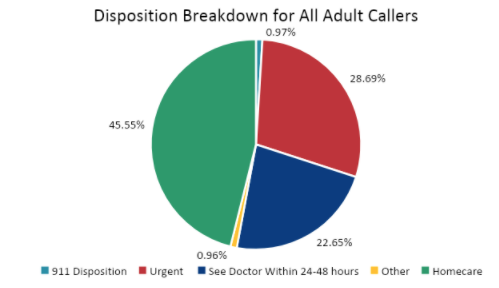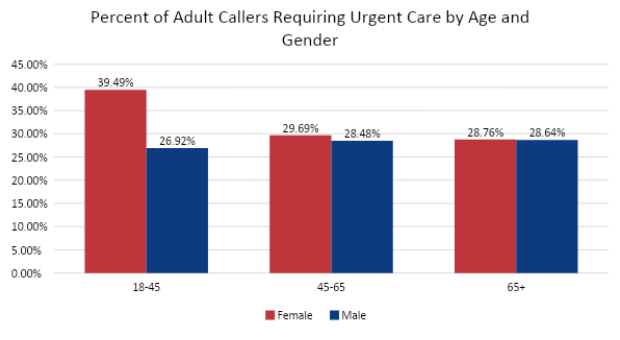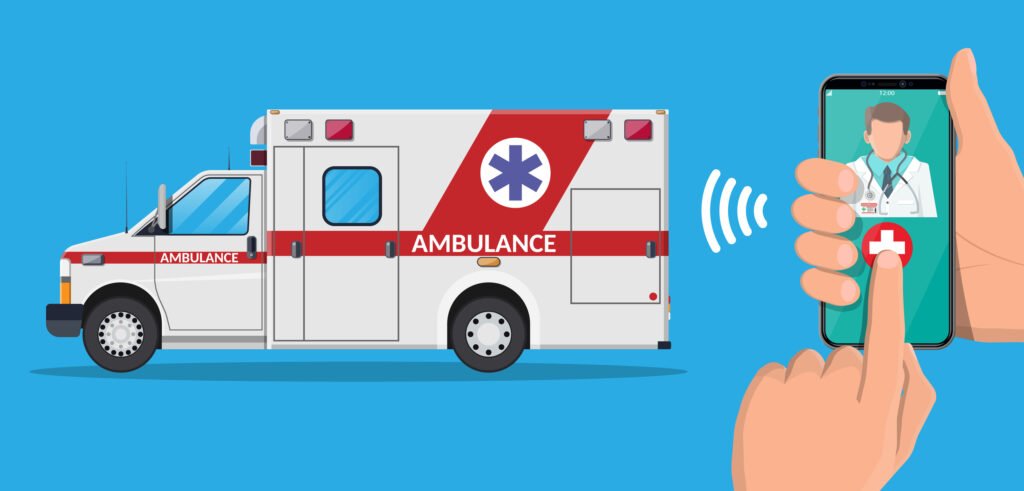Telephone nurse triage saves patient lives and saves healthcare organization money. Often,
patients who call a nurse triage line don’t know whether their symptoms are a sign of serious
medical problems. Patients may also underestimate the severity of their symptoms and avoid
seeking treatment. This issue was especially prevalent during the COVID-19 pandemic, reported
here in Triage Logic’s white paper patient phone call study.
Using a set of standardized protocols, telephone triage nurses assess patient symptoms and
determine which patients have the most serious symptoms and identify who may need immediate
medical attention. In this article, we evaluate the demographics of patients with an emergency
disposition
Data Description
We studied data from 230,000 telephone calls from our nurse triage call center from January-
October 2020. Nurses ensured that all callers received standardized, high-quality care by using
guided symptom-based protocols written by Doctors Schmitt and Thompson. During each call
we collected information about the patient’s demographics, the triage protocol used by the nurse,
and the patient’s disposition. Patients were also asked whether or not they were planning to go to
the emergency room (ER) prior to calling a nurse. In this article we focus on the callers that
ended up in the ER and their demographics.
DEMOGRAPHICS OF PATIENTS WITH URGENT SYMPTOMS
Which patient is most likely to go to the ER? When a patient calls the nurse triage line, the nurse
assesses their symptoms and follows a protocol to determine the correct disposition for the
patient. Dispositions indicate the level of care that patients are assigned to by the triage nurse. A
nurse determines which of the five triage levels the patient falls under and recommends care
accordingly.
Figure 1 presents the assigned disposition results for all adult patients who called for nurse triage
between January and October of 2020. We find that about 29% of adult callers had serious
medical symptoms that required urgent attention. About 1% of callers were told to call
911.

Figure 1: Dispositions advice assigned to adult callers by the triage nurse.
Next, we looked only at patients who were assigned an urgent disposition by the triage nurse.
Patients given an urgent disposition had serious symptoms and needed to seek medical attention
immediately. Figure 2 looks at what percent of patients in each gender and age group were
instructed to seek urgent care by the triage nurse. This breakdown allows us to understand if
some callers had more serious symptoms than others.

Figure 2: Percent of Adult Callers who were told to seek urgent care by the triage nurse by
gender and age.
We find that on average, about 26-30% of adult callers are instructed to seek urgent care when
they call the triage nurse (January 200 to October 2020). This means that more than 1 in 4
adults who call the nurse triage service need urgent medical attention.
Women aged 18-45 are 1.5 times as likely to need urgent care as men of the same age.
Women of this age also call about 3 times more frequently than men (Figure 2).
There are several possible explanations for why we received more calls from women aged 18-45
and why their symptoms are more severe. One reason is that the nurse triage service received a
large number of calls from pregnant women. Protocols for pregnant women may indicate more
frequently that the patient should be sent to the ER for caution’s sake because of the higher risk
for pregnancy complications. Another explanation is that symptoms that are not always serious
amongst male callers, such as abdominal pain, may be indicative of a more serious condition for
women. Finally, women may be more likely to underestimate the severity of their symptoms and
not go straight to their doctor when they are sick.
Want to learn more about nurse triage? We also offer free courses for nurses in our Learning
Center.
Want to give patients access to your practice 24/7? Contact us today to discuss your needs and
we will set up a customized plan that works best for your organization and your patients.






